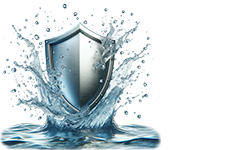You’re trying to choose the right air purifier, but you’re drowning in a sea of technical jargon. The spec sheets are a bewildering mix of acronyms and numbers—CFM, ACH, microns—that seem designed to confuse, not clarify. This paralysis isn’t just frustrating; it’s a trap that can lead you to waste hundreds of dollars on a machine that’s completely wrong for your space. An underpowered unit is a glorified fan, leaving your family breathing the same polluted air, while an oversized beast is an expensive, noisy mistake. It’s time to learn the one “cheat code” that cuts through it all. Understanding what does CADR rating mean for air purifiers is the key to choosing the perfect unit with absolute confidence, every single time.
CADR Explained: The Horsepower Rating for Clean Air
Let’s demystify this immediately. CADR stands for Clean Air Delivery Rate. It is a performance metric developed by the independent Association of Home Appliance Manufacturers (AHAM) to help consumers understand an air purifier’s effectiveness.
Think of it like this: CADR is the horsepower rating for your air purifier.
It doesn’t just measure how much air the fan can move (that’s CFM, or Cubic Feet per Minute). Instead, it measures the actual volume of clean, filtered air the unit produces at its highest fan speed. The higher the CADR number, the faster and more efficiently it can clean a room.
The 2/3 Rule: Your Foolproof Sizing Formula
This is the single most valuable trick for choosing the right air purifier. Instead of getting lost in complex calculations, use this simple, industry-insider rule of thumb:
An air purifier’s CADR rating for Smoke should be at least two-thirds (2/3) of your room’s area in square feet.
Why Smoke? Because smoke particles are the smallest and most difficult to capture, making that number the most accurate representation of a purifier’s true power.
Here’s how it works in a real-world Hudson Valley home:
For a 150 sq. ft. bedroom (10′ x 15′):
150 x (2/3) = 100. You need a purifier with a Smoke CADR of at least 100.
For a 300 sq. ft. living room (15′ x 20′):
300 x (2/3) = 200. You need a unit with a Smoke CADR of at least 200.
For a 450 sq. ft. open-concept area (20′ x 22.5′):
450 x (2/3) = 300. You need a powerful machine with a Smoke CADR of at least 300.
This simple formula ensures the purifier is powerful enough to achieve roughly 4.8 air changes per hour (ACH), which is the standard for maintaining healthy indoor air.
Beyond the Number: Decoding the Three Scores of CADR
When you look at an AHAM-verified CADR seal, you’ll notice it’s not one number, but three. This is because performance is tested against the three most common types of indoor air pollutants, each with a different particle size.
Smoke, Dust, and Pollen: Why You See Three Numbers
Tobacco Smoke (0.09-1.0 microns): These are the smallest particles, representing fine dust, wildfire smoke, and other combustion byproducts. Because they are the most difficult to trap, this is the most important number to consider. A unit with a high Smoke CADR is a high-performance machine across the board.
Dust (0.5-3 microns): This represents common household dust, dust mite debris, and pet dander.
Pollen (5-11 microns): These are the largest particles, representing seasonal allergens from trees and weeds.
A purifier’s CADR will often be highest for Pollen and lowest for Smoke. By using the Smoke rating in the 2/3 Rule, you are sizing the unit based on its performance against the toughest challenge.
The High-Ceiling Caveat: When to Think in 3D
The 2/3 Rule is based on a standard room with 8-foot ceilings. If you live in a home with vaulted, cathedral, or loft-style high ceilings, your room’s total air volume is much larger. In this case, you need to compensate.
The Adjustment: For rooms with ceilings 10 feet or higher, you should choose an air purifier with a CADR rating that significantly exceeds the 2/3 Rule’s recommendation. As a general guideline, add 25% to the required CADR for every 2 feet of ceiling height above 8 feet.
Common CADR Questions and Misconceptions
Q: Is a higher CADR rating always better? A: “Better” is relative to your needs. A purifier with a 400 CADR is not “better” for a 100 sq. ft. office; it’s overkill. You’ll have spent more money on a machine you’ll likely run at a lower, less efficient speed. The goal is not to buy the highest number, but to precisely match the right CADR to your room’s square footage using the 2/3 Rule.
Q: What is the difference between CADR and CFM? A: This is a critical distinction. CFM (Cubic Feet per Minute) measures the raw power of the fan—how much total air it can move. CADR measures the output of filtered, clean air. A unit can have a high CFM but a low CADR if its filters are dense and restrictive. CADR is always the more meaningful metric for purification effectiveness.
Q: Why doesn’t the brand I’m looking at have a CADR rating? A: CADR verification by AHAM is a voluntary (and expensive) program. Most major, reputable brands participate because it provides an objective, third-party validation of their claims. If a brand does not have an AHAM-verified CADR rating, it doesn’t necessarily mean it’s a bad product, but it does mean you have no way to reliably compare its performance against other units. It becomes a “buyer beware” situation.
From Confused Shopper to Empowered Expert
CADR is no longer a confusing acronym. It is your tool, your metric, your secret weapon for navigating the air purifier market. Armed with the 2/3 Rule and a deeper understanding of what the numbers truly represent, you can now select a machine with the precision of an industry expert. You are empowered to invest your money wisely, ensuring the air purifier you bring home has the proven performance to create a clean, healthy sanctuary for your family.
You’ve just mastered the science of choosing the perfect air purifier. But what about the technology that ensures your water is pure? The world of water filtration has its own confusing specs and standards. Let us cut through the noise for you. Call the experts at Safe Water Solutions, LLC at (845) 579-2014 for a clear, simple conversation about the right water solution for your home.
You’ve just mastered the complex science of clean air, turning confusing numbers into confident choices for your family’s health.
But what about the water in your home? The world of water purification has its own baffling set of specs and standards, designed to leave you guessing. Are you certain the water your family drinks is truly pure, or are you relying on confusing marketing claims?
You deserve the same level of absolute clarity and confidence in your water as you now have in your air.
At Safe Water Solutions, LLC, we cut through the noise. We translate the complex science of water purification into simple, honest answers for our Hudson Valley neighbors. Don’t head into the weekend with questions. Get the answers you deserve now.
Click here to contact us, or call our local experts for a clear, no-pressure conversation. Dial (845) 579-2014 and let us empower you with the truth about your water.

